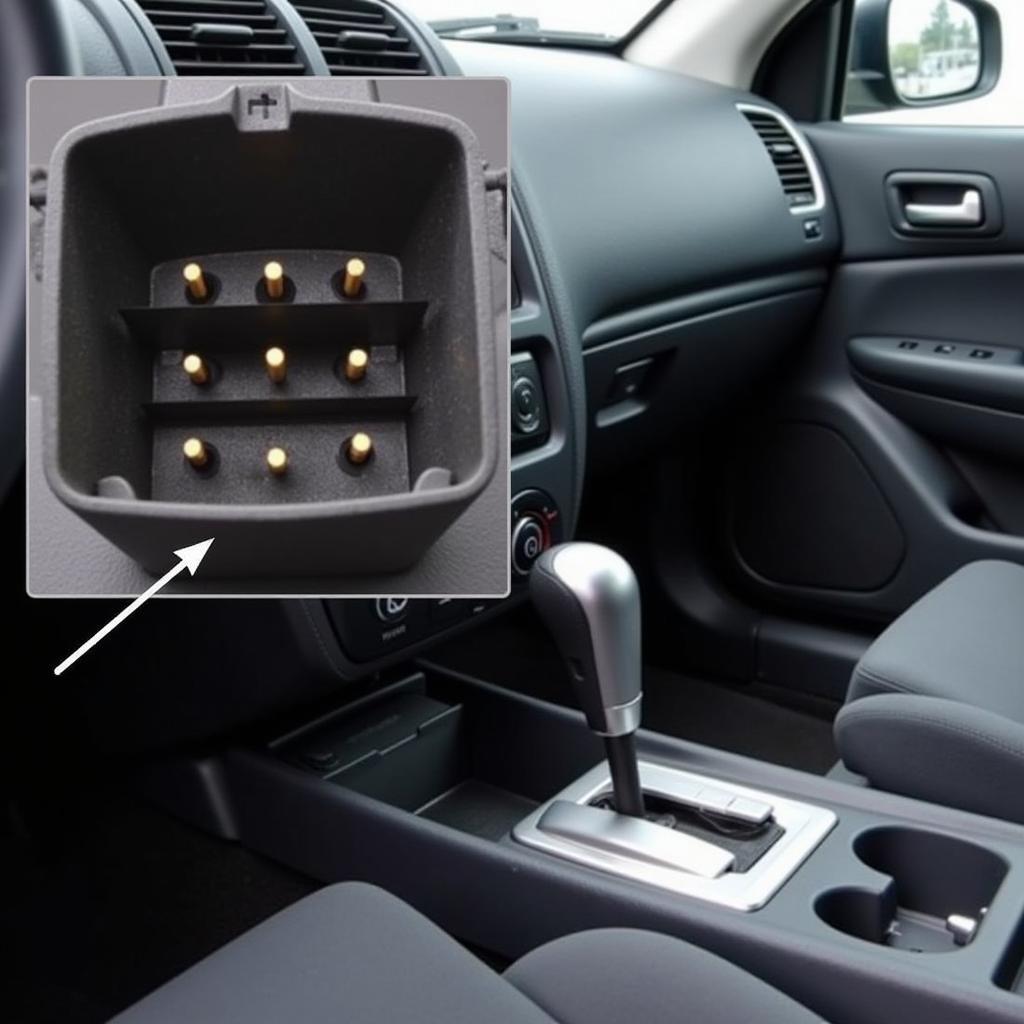Finding the best on-board diagnostic (OBD) tool for your car can feel like navigating a maze. With so many options available, it’s important to understand what you need and what each tool offers. This article will guide you through the world of OBD tools, helping you choose the best on-board diagnostic tool for your car and empowering you to take control of your vehicle’s health.
Understanding On-Board Diagnostics (OBD) and Your Car
OBD systems are essentially your car’s built-in computer system that monitors emissions, engine performance, and other vital components. The OBD port, usually located under the dashboard on the driver’s side, provides access to this data. An OBD tool allows you to tap into this information, reading diagnostic trouble codes (DTCs), monitoring real-time data, and even performing some basic tests. What does the tool light mean on a car? It often signifies an issue detected by the OBD system, prompting you to use a diagnostic tool for further investigation.
 OBD Port Location in Car
OBD Port Location in Car
Choosing the Best On-Board Diagnostic Tool for Your Car
Selecting the best on-board diagnostic tool cars depends on your needs and budget. Are you a DIY enthusiast looking to troubleshoot basic issues? Or a professional mechanic requiring advanced functionalities?
Types of OBD Tools
- Basic Code Readers: These affordable tools read and clear DTCs, giving you a starting point for diagnosing problems. Ideal for car owners who want to understand why their check engine light is on.
- Bluetooth/Wi-Fi OBD Adapters: These connect to your smartphone or tablet, providing a more detailed view of your car’s data through dedicated apps. They’re a great mid-range option, offering more functionality than basic code readers.
- Professional Scan Tools: These high-end tools offer advanced features like bi-directional control, allowing mechanics to perform tests and even program certain components.
Key Features to Consider
- Code Reading and Clearing: This is the fundamental function of any OBD tool.
- Live Data Streaming: Monitor real-time sensor data to diagnose issues more effectively.
- Smog Check Readiness: Check if your car is ready to pass emissions testing.
- Vehicle Compatibility: Ensure the tool is compatible with your car’s make, model, and year. Some older vehicles might require specialized adapters.
- User Interface: A clear and intuitive interface makes the tool easier to use.
- Data Logging and Reporting: This feature is helpful for tracking data over time and sharing it with a mechanic.
- Additional Features: Some tools offer ABS, airbag system diagnostics, and more.
OBD Tools for Specific Needs
If you’re just looking to remove your car stereo, you might find tools like the car dash buttons removal tool quite helpful. And if you’re thinking of changing your car’s mileage, make sure to research the legal implications of using a car odometer change tool.
 Key Features of OBD Scanners
Key Features of OBD Scanners
OBD-II and Beyond
While OBD-II is the current standard, the future of car diagnostics is evolving rapidly. We’re seeing increased integration with smartphones, cloud-based diagnostics, and even predictive maintenance. Staying informed about these advancements can help you choose an OBD tool that remains relevant for years to come.
Are you looking for free car mechanic tools? While many essential tools require an investment, there are free resources available, such as diagnostic software and online repair manuals, that can complement your OBD tool and enhance your diagnostic capabilities. Removing a car stereo without DIN tools can also be done, although specialized tools make the process easier and safer.
Conclusion
Choosing the best on-board diagnostic tool for your car is a crucial step towards understanding and maintaining your vehicle’s health. By understanding your needs, researching the available options, and considering the key features discussed above, you can make an informed decision and empower yourself to take control of your car’s maintenance.
FAQ
- What is an OBD port? It’s a standardized connector that provides access to your car’s diagnostic system.
- Do all cars have OBD ports? Most cars manufactured after 1996 in the US and 2001 in Europe have OBD-II ports.
- Can I use an OBD tool to fix my car? OBD tools primarily diagnose problems; repairs may still require a mechanic.
- How often should I use an OBD tool? It’s a good idea to scan your car periodically, especially if the check engine light comes on.
- Are there free OBD software options? Yes, several free and open-source OBD software options are available.
- What is the difference between OBD and OBD-II? OBD-II is the second generation of the On-Board Diagnostics standard, with improved features and standardization.
- Can I install an OBD port in an older car? It’s possible to install an aftermarket OBD system in some older cars, but it might require significant modifications.
For further assistance, please contact us via WhatsApp: +1(641)206-8880, Email: [email protected] or visit our office at 910 Cedar Lane, Chicago, IL 60605, USA. We have a 24/7 customer support team ready to help.

Leave a Reply